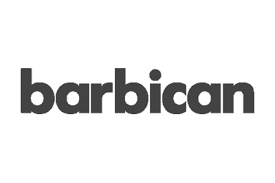The Great Resignation and Quiet Quitting signalled a change in employment as a worker’s market, and employees increasingly seek to meet their own personal requirements and align themselves with an organisation’s values and purpose. Congruently organisations have rightly been focused on diversity hiring initiatives, but so much so, that many are not looking at how their existing employees are experiencing the workplace. According to inclusive culture expert, Joanne Lockwood, CEO & Founder of SEE Change Happen, “We need to clean the toxic tank before we bring in new fish, or both the existing and new fish will fail to thrive.”
A toxic work environment usually becomes clearly apparent through the extremes of harassment and bullying, but discrimination alone can result in high employee turnover and unproductive, demoralised employees, with three in five employees in one survey saying work-related stress led to a lack of interest, motivation and energy at work. Toxic work environments also have a significant impact on mental and physical health as well, with work-related stress resulting in 32% of respondents reporting emotional exhaustion, and 44% reporting physical fatigue.
Lockwood describes the effects of a lack of diversity and inclusion on developing poor work cultures. “I was at an RAF reunion recently and we were a mixed bunch from diverse backgrounds and ethnicities, but the group was predominantly straight, white, and male. There were conversations vociferously rejecting the phrase “white privilege” and defending the “white male” as an under-attack group – one friend remarked that he may be white and male, but he hadn’t had it easy. Of course, he hadn’t had it easy but checking one’s privilege isn’t about comparing the struggles you’ve had with those of others – it’s about recognising the struggles you haven’t had to experience because of your gender, skin colour and sexual orientation.”
“I was speaking to a young graduate black woman who had joined her organisation through a graduate entry scheme. Many of her fellow graduates were also young black or brown women, so she felt there was an opportunity to progress in an organisation committed to its diversity and inclusion values. Her hopes and those of others in her programme were soon dashed – a promotion was offered behind the scenes to a white woman from the group. Given the opportunity wasn’t advertised, the black and brown graduates were not even aware of what had happened until it was a fait accompli. Another woman shared a story about her black colleague who was dismissed without any warning due to poor work performance. On investigation, it transpired that the supervisor was too afraid to discuss their performance and coach them because they were worried it would be seen as racist so ignored the issue until it became an insurmountable problem.
“These examples are everywhere when talking to people from marginalised or under-represented groups. The lived experience bears out the truth that we are a long way from levelling up the playing field. A toxic work environment is contagious. Even a hybrid workplace can be noxious as toxicity can spread just as easily virtually as it can in person. This means that businesses need to be more focused on retaining before looking at onboarding and attracting new talent and recruiting.”
Lockwood says the first port of call must be to identify the sources of toxicity and address problem behaviours by directly addressing discrimination and harassment and develop a zero-tolerance policy which will at the same time build transparency and trust. Creating a safe space with a confidential system in place to enable employees to report any incidents of toxicity or harassment is a must, as is offering mental health support and resources to those who may be struggling. Companies that have effective channels of communication usually have around a 50% higher chance of reducing employee turnover. But there are also deeper ways to clean the tank and clean out the toxicity in business culture. Joanne Lockwood shares ten further solutions.
- Actively and authentically choose diversity, equality and inclusion to avoid workers feeling disrespected and undervalued, and to break the cycle of toxicity, bullying, discrimination, lack of support, poor communication and high turnover. It is easy to fall into the echo chamber where everyone has similar thoughts and beliefs about building an equitable society and workplace but no one actions change. Diversity and inclusion will lead to greater innovation and collaboration in the workplace, ultimately benefiting businesses and individuals.
- Create a culture that employees want to be part of. Changing the work culture from within and retaining current employees is more financially beneficial than continuing to hire new employees, which can cost companies on average £30,000. To have an attractive, healthy culture, check your current employees’ experience – how is their well-being, what are their opportunities for development, and are they under too much pressure?
- Offer a wage to match the hard work of your employees and to make them feel valued. Pay them what their time, experience, responsibility and knowledge are worth. Don’t cut corners and make sure there is true equity. If their responsibility increases, so should their pay and they should be able to afford the cost of living. If you are not matching the salaries that your competitors are offering then that will result in an exodus of talent. Recognise and reward your employees and understand that means different things for different people.
- Prioritise wellness to enable employees to have a good work/ life balance to reduce work-related stresses and tensions or conflict in the workplace. Culling toxicity needs to be a priority to ensure employee wellness and to reduce any potential for burnout or high employee turnover. Work stress and burnout often come from a lack of support, too much pressure, too great a workload, poor communication and unreasonable demands.
- Encourage teamwork. When we feel we are all in it together and have opportunities to collaborate and use our skills to good effect, strong relationships are likely to be built. This is also a good way to identify potential problem employees who won’t cooperate.
- Upskill your existing talent. The value of continuing to invest in training and upskilling employees can sometimes be forgotten with many managers moving straight to employing externally. Enabling employees to develop their skills and enhance their expertise means they can grow and learn and continue to feel engaged and motivated at work.
- Don’t force employees to participate. Forced participation in work projects such as presentations, or social or team-building activities, can be big enough for some people to want to leave. Know your people and offer choices and develop employee engagement in other ways.
- Be flexible. Offer flexible work arrangements to accommodate employee needs to ensure their well-being. Workers with better flexibility enjoy greater autonomy and feel less fatigue as a result of lengthy commutes and less stress about childcare. Reduce non-essential meetings (in person and online).
- Feedback opportunities – Fostering a supportive management style with feedback opportunities for both listening and giving feedback can create a more open workplace culture. 25% reported in one survey that they don’t feel safe voicing their onions on work-related issues communication and feedback. Allow employees to feel safe enough to give candid feedback.
- Prioritise strong relationships between employees and managers. By providing feedback, offering support and guidance and understanding the needs of the individual, and getting to know them a little bit, managers can coach rather than dictate which creates a far more positive work environment.
Author: Inclusive Culture Expert, Joanne Lockwood, CEO & Founder of SEE Change Happen







